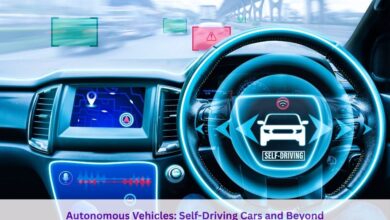The Rise of Electric Vehicles: What’s Next After Tesla?

Introduction: Tesla’s Trailblazing Legacy
Tesla has long been synonymous with electric vehicles (EVs), pioneering innovations in battery technology, autonomous driving, and sustainable transportation. However, the EV landscape is rapidly evolving, with numerous emerging brands and technological advancements challenging Tesla’s dominance. This article delves into the new players reshaping the EV market, breakthroughs in battery technology, and global policies accelerating EV adoption.
Emerging EV Brands Challenging Tesla
BYD: The Global Contender
Chinese automaker BYD has emerged as a formidable competitor, surpassing Tesla in global EV sales. In Q1 2025, BYD delivered nearly 1 million vehicles, including 416,000 all-electric units, marking a 58% increase and outpacing Tesla’s deliveries . BYD’s vertically integrated production and cost efficiencies, offering EVs under $10,000, pose a significant threat to Tesla and traditional automakers .Rest of World+2New York Post+2Barron’s+2Barron’s
XPeng: Innovation at a Competitive Price
XPeng, another Chinese EV manufacturer, has expanded into international markets, including the UK, with its G6 SUV. The G6 features adaptive speed control through traffic sign recognition and is priced competitively, challenging Tesla’s offerings .Wikipedia+2The Sun+2U.S. News Money+2
Nio and Onvo: Diversifying the EV Portfolio
Nio has introduced Onvo, a sub-brand targeting the mass market with models like the L60 SUV, designed to compete directly with Tesla’s Model Y. Priced at approximately $30,500, the L60 offers a range of up to 1,000 km, emphasizing affordability without compromising performance .The Irish Sun+3Wikipedia+3Wikipedia+3
Leapmotor: Affordable EVs for the Masses
Leapmotor aims to become the UK’s best-value EV brand by 2027, offering models like the T03 city car and the C10 SUV. With prices starting at £15,995, Leapmotor focuses on delivering high-tech, high-spec EVs at competitive prices, appealing to budget-conscious consumers .The Irish Sun
Breakthroughs in Battery Technology
Solid-State Batteries: The Next Frontier
Solid-state batteries (SSBs) are poised to revolutionize the EV industry by offering higher energy density, faster charging times, and improved safety. Companies like SK On have developed hybrid solid electrolytes, enhancing battery longevity and performance . Similarly, Honda’s advancements in SSBs aim to achieve 80% charge in under 10 minutes, significantly reducing charging times .Electrek+4Charged EVs+4RD World Online+4How-To Geek
Sodium-Ion Batteries: A Cost-Effective Alternative
Researchers have developed anode-free sodium solid-state batteries, offering a cheaper and more abundant alternative to lithium-ion batteries. These batteries promise fast charging and high capacity, making them suitable for EVs and grid storage .ScienceDaily
Government Policies Accelerating EV Adoption
United States: Incentives and Infrastructure
The U.S. government has implemented various incentives to promote EV adoption, including tax credits and investments in charging infrastructure. These measures aim to reduce greenhouse gas emissions and support the transition to sustainable transportation.
European Union: Emission Targets and Subsidies
The EU has set ambitious emission reduction targets, encouraging member states to offer subsidies for EV purchases and invest in charging networks. Countries like Norway and the Netherlands have seen significant increases in EV adoption due to these policies.
China: Leading the EV Revolution
China’s government has been instrumental in promoting EV adoption through subsidies, mandates, and investments in infrastructure. This proactive approach has positioned China as a global leader in EV production and sales.
Conclusion: The Road Ahead
The electric vehicle industry is undergoing a transformative phase, with emerging brands challenging established players like Tesla. Technological advancements in battery technology and supportive government policies are accelerating the shift towards sustainable transportation. As the EV landscape continues to evolve, consumers can expect a broader range of affordable, efficient, and innovative electric vehicles in the near future.



